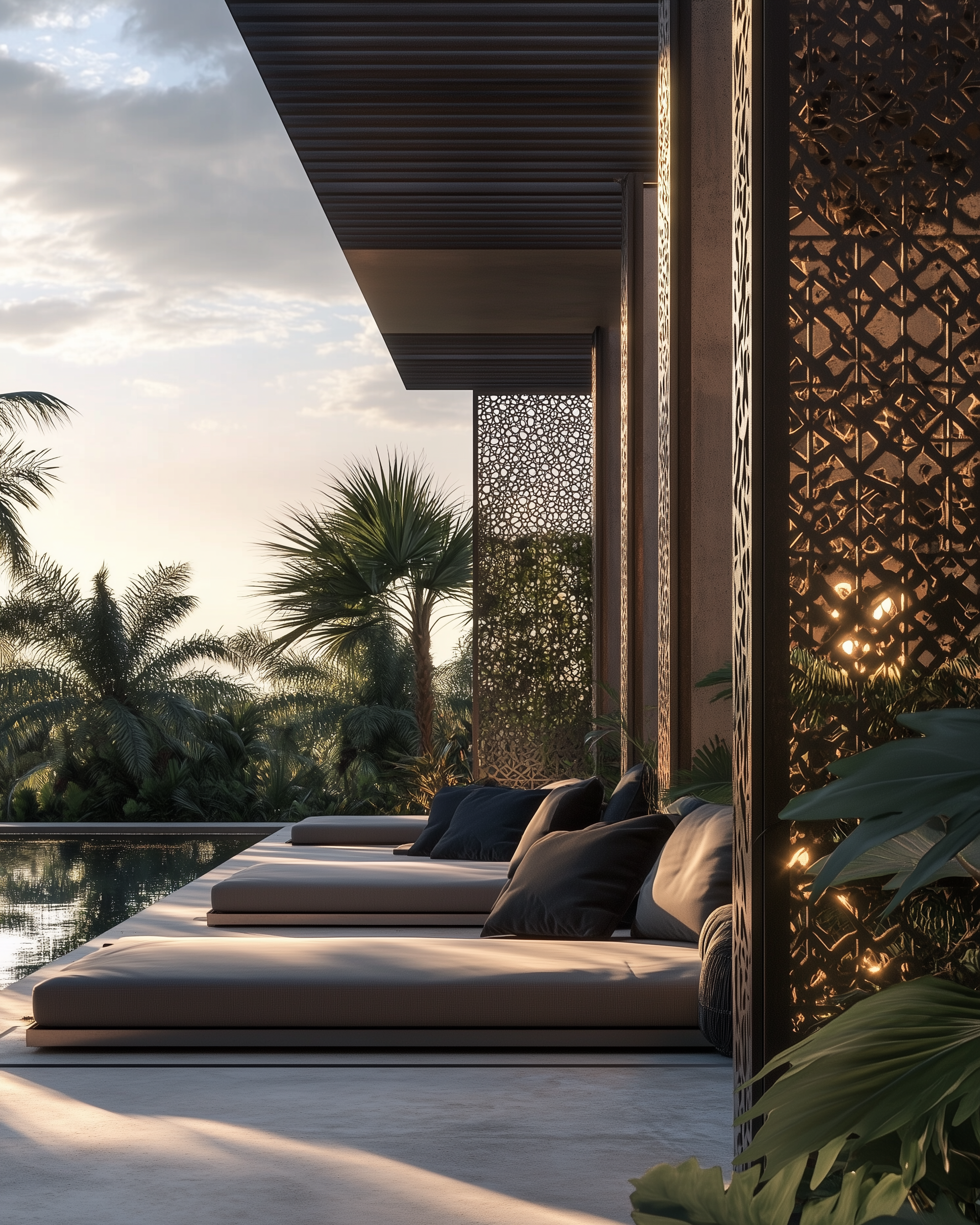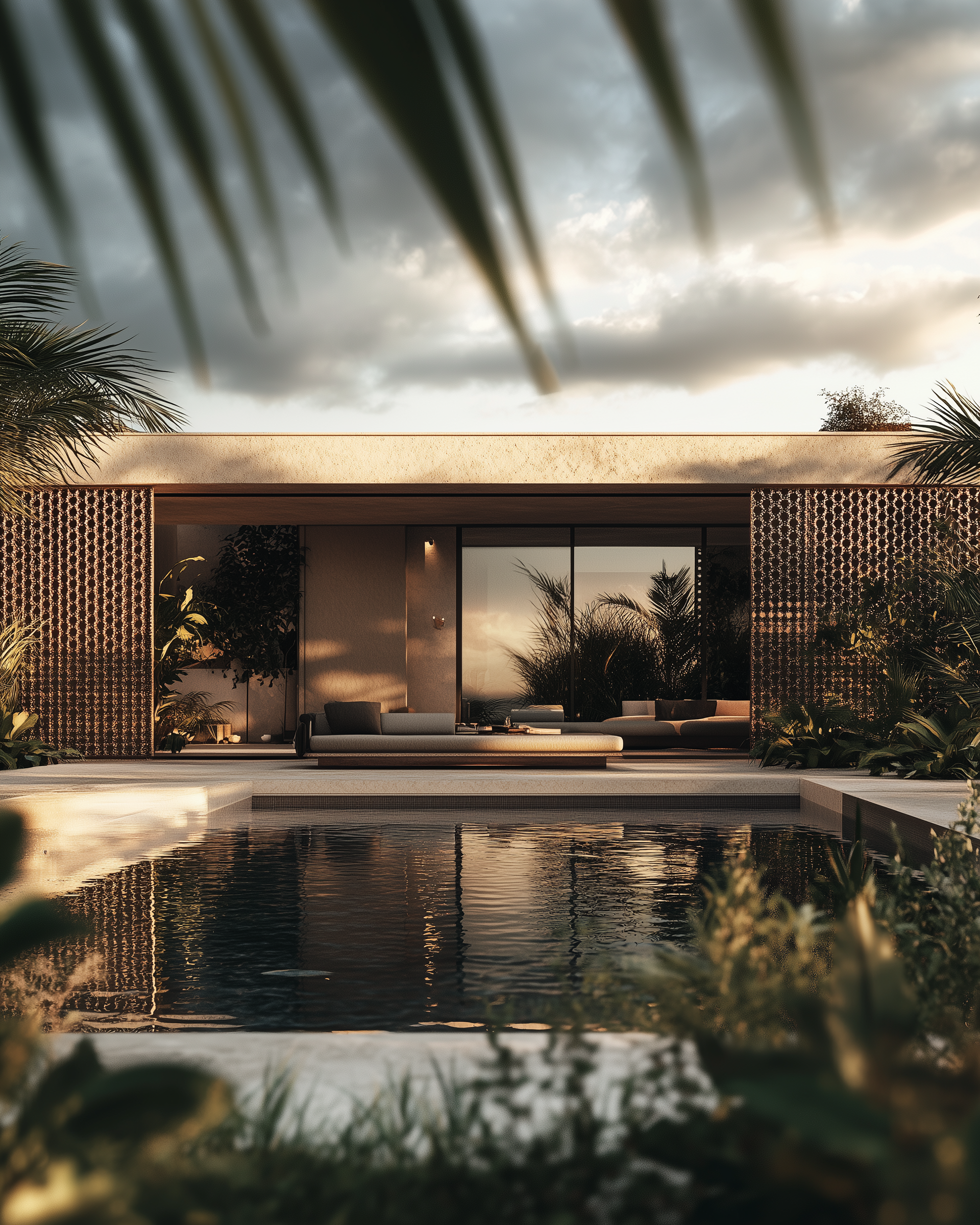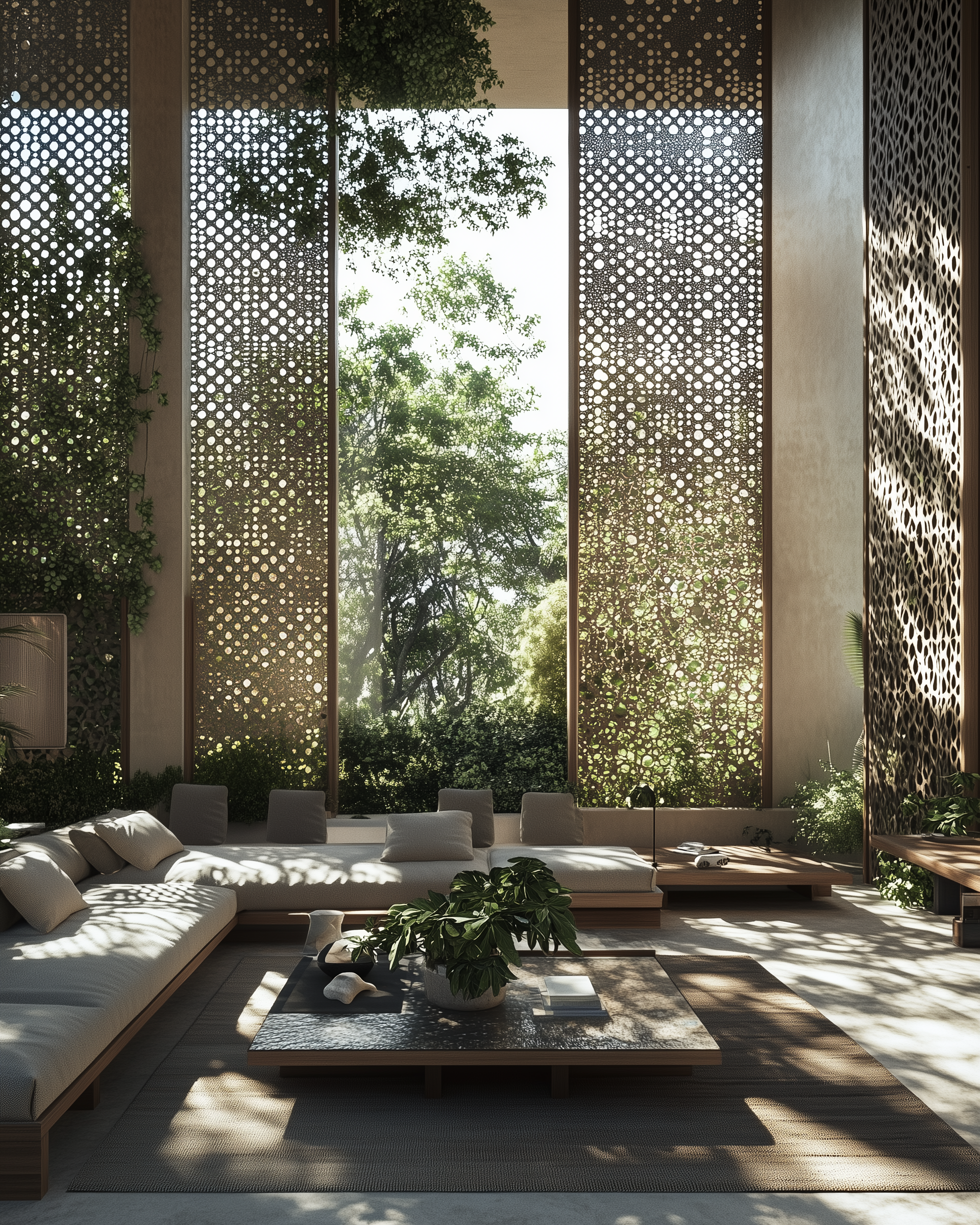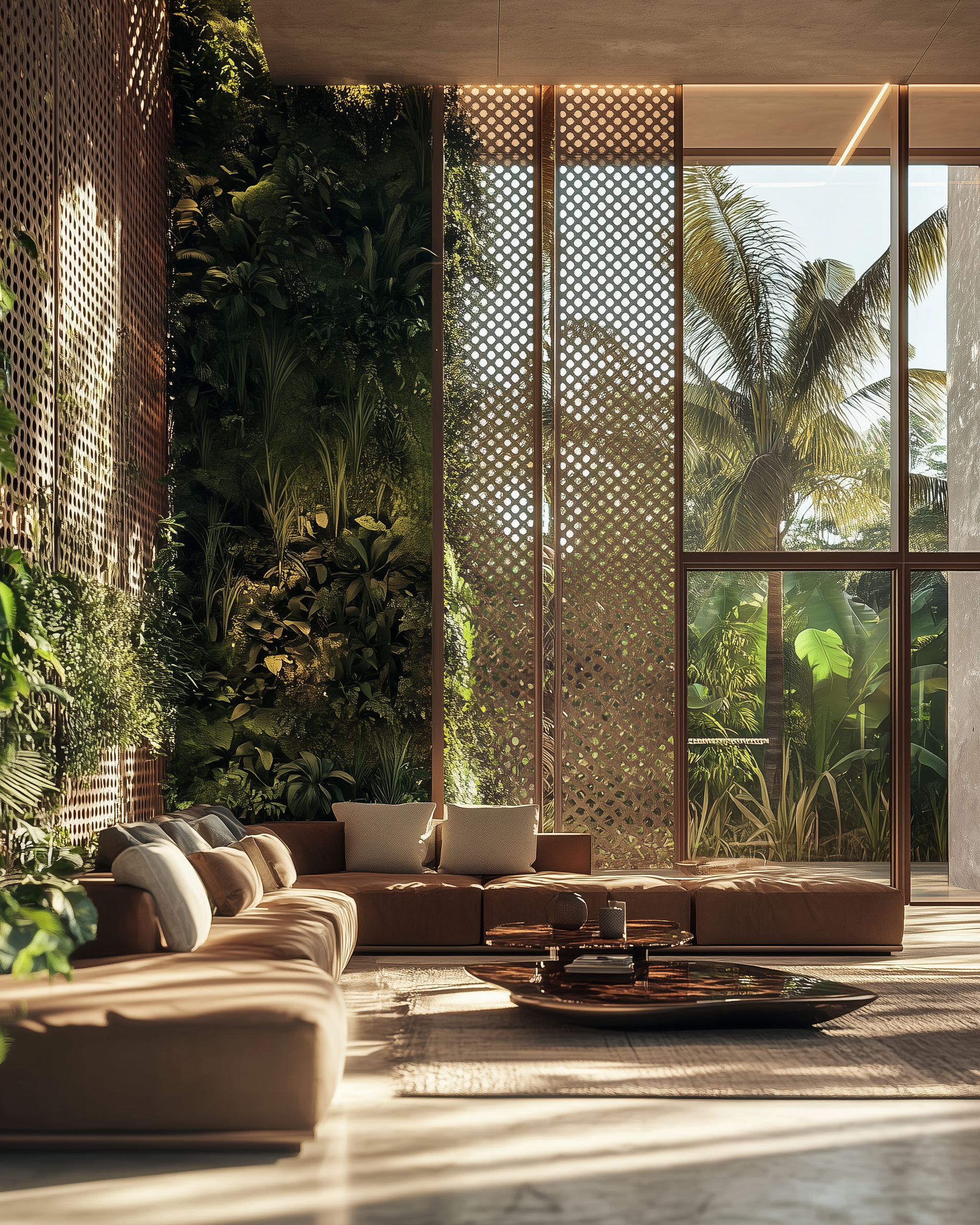
TRENDS
Biophilic Design
The philosophy behind Biophilic Design has been around as long as our intrinsic need to stay connect with nature. As a design trend is has resurfaced relatively recently as designers strive to create more sustainable and livable habitats. Todays images show very tight integration with the three aspects of surrounding nature - facade elements seem to grow out from the surrounding cliffs, plants grow over and through the structure and sea water below is brought up to the inhabitants in form of swimming pools.






3D Walls
Whether through the introduction of 3D tiles, green walls (living or faux), artificial rockwork, textured plaster, or a combination, extending the wall decoration into the third dimension is a sure way to add interest and drama to any room. A feature wall can become a singular centerpiece of the space creating a unique look. It will combine great with funcitonal elements like mirrors, fireplaces or media setups. IT can also go a long way in conveing a specific style or a theme.



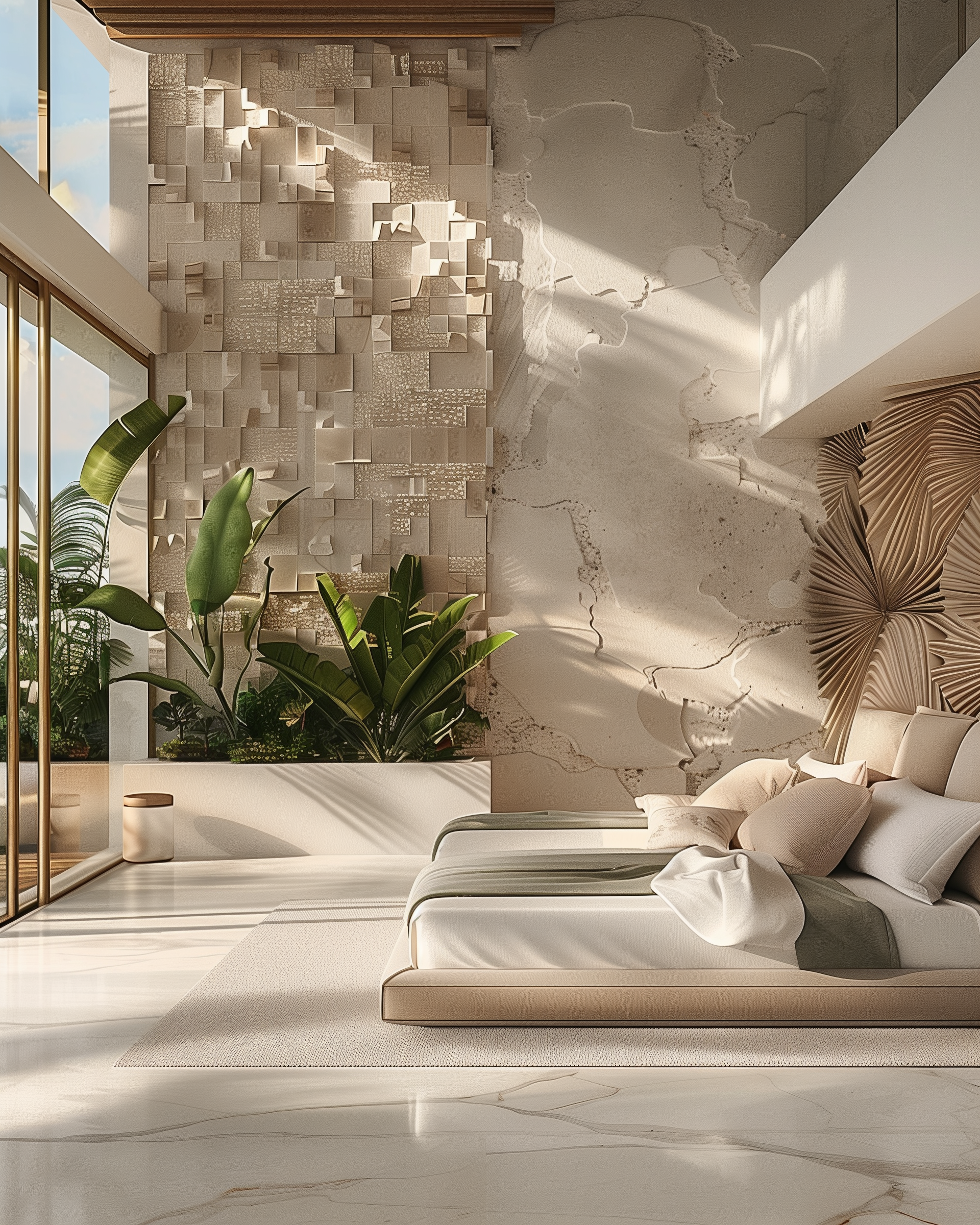

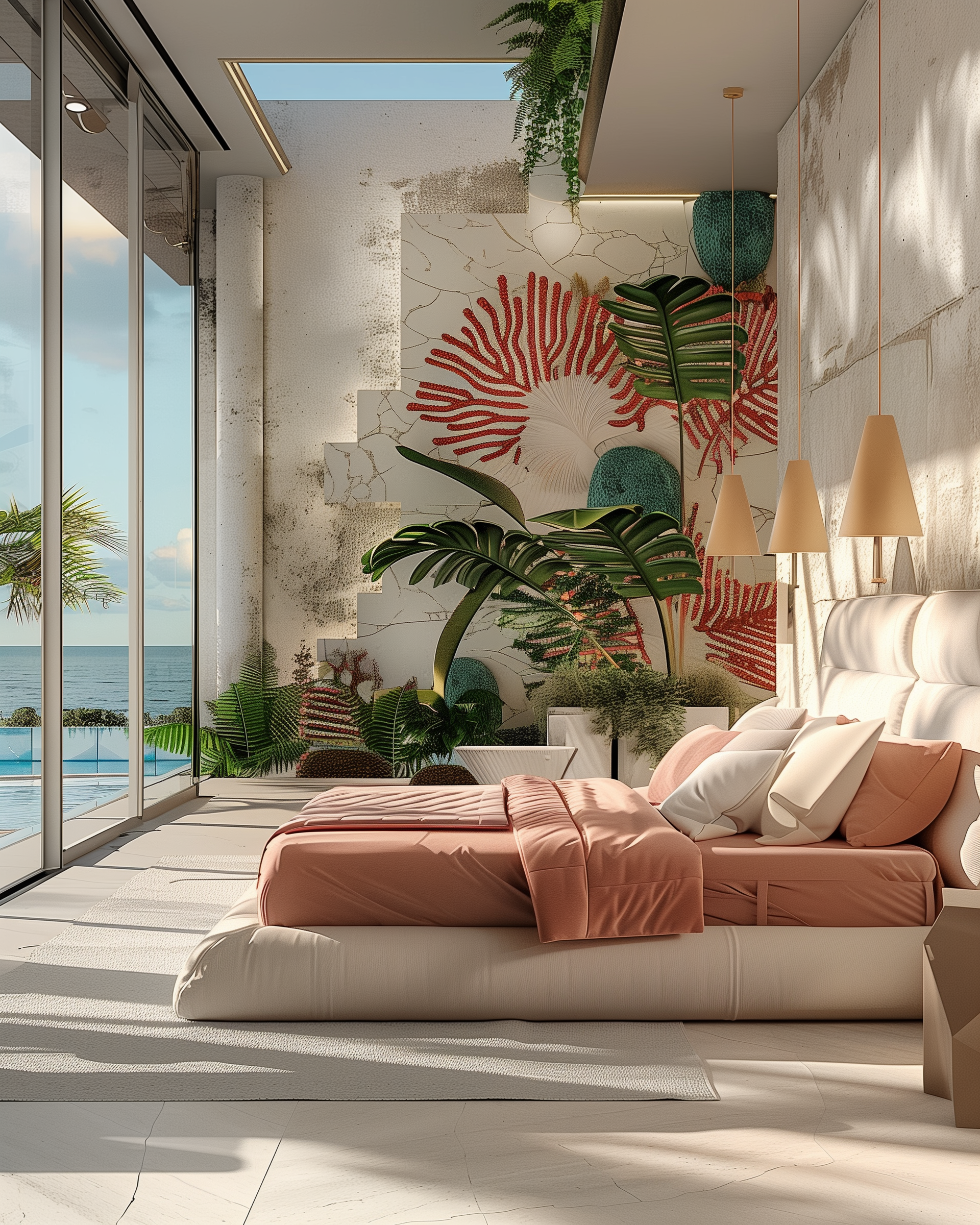
Art Deco Interiors
Art Deco has been experiencing a revival in recent time bringing back its signature blend of glamour, luxury and geometric elegance into the interior spaces. This style originally emerged in the 1920s and 1930s and took its name from the international Exhibition of Modern Decorative Industrial Arts in Paris in 1925.
Originally Art Deco was conceptualized as a celebration of optimism related with the rapid progress and swift cultural and societal changes of its time. The key elements were
geometric patterns (chevrons, zigzags and sunbursts), luxurious materials (marble, polished wood, chrome and brass), bold colors (emerald green, blue sapphire and ruby red), statement lighting (bold chandeliers, sconces and richly detailed table lamps), curves and arches visible in architecture and furnishing
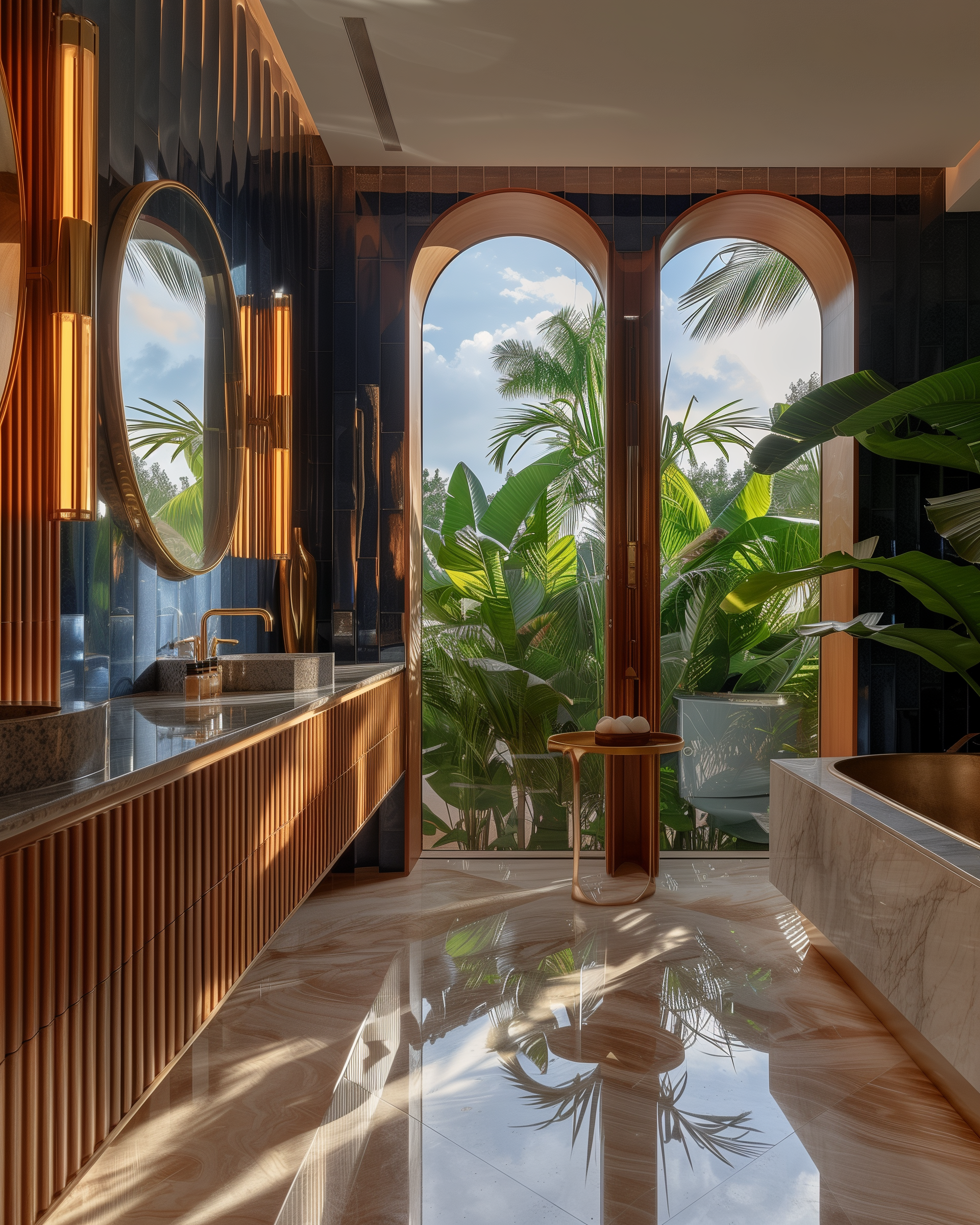

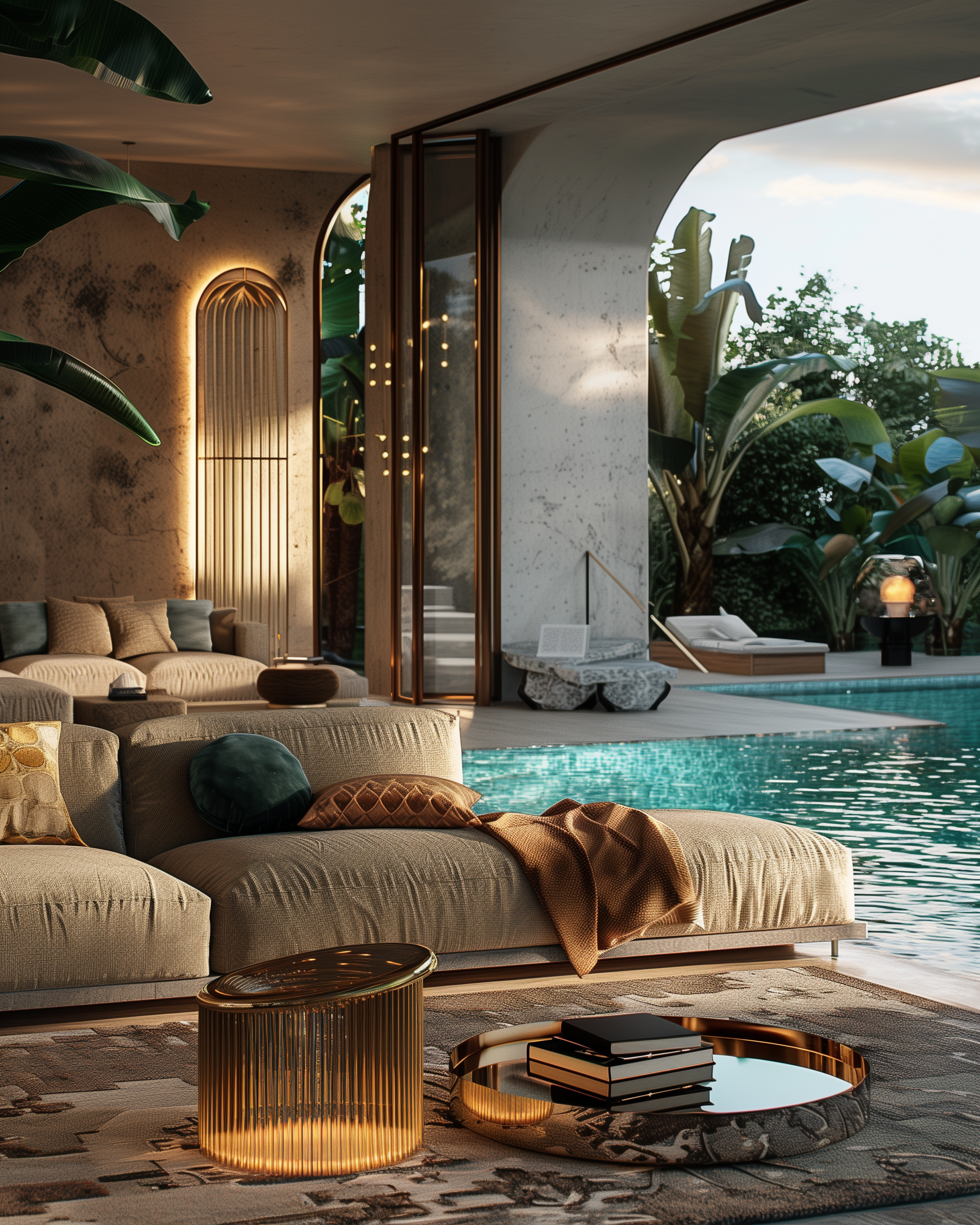
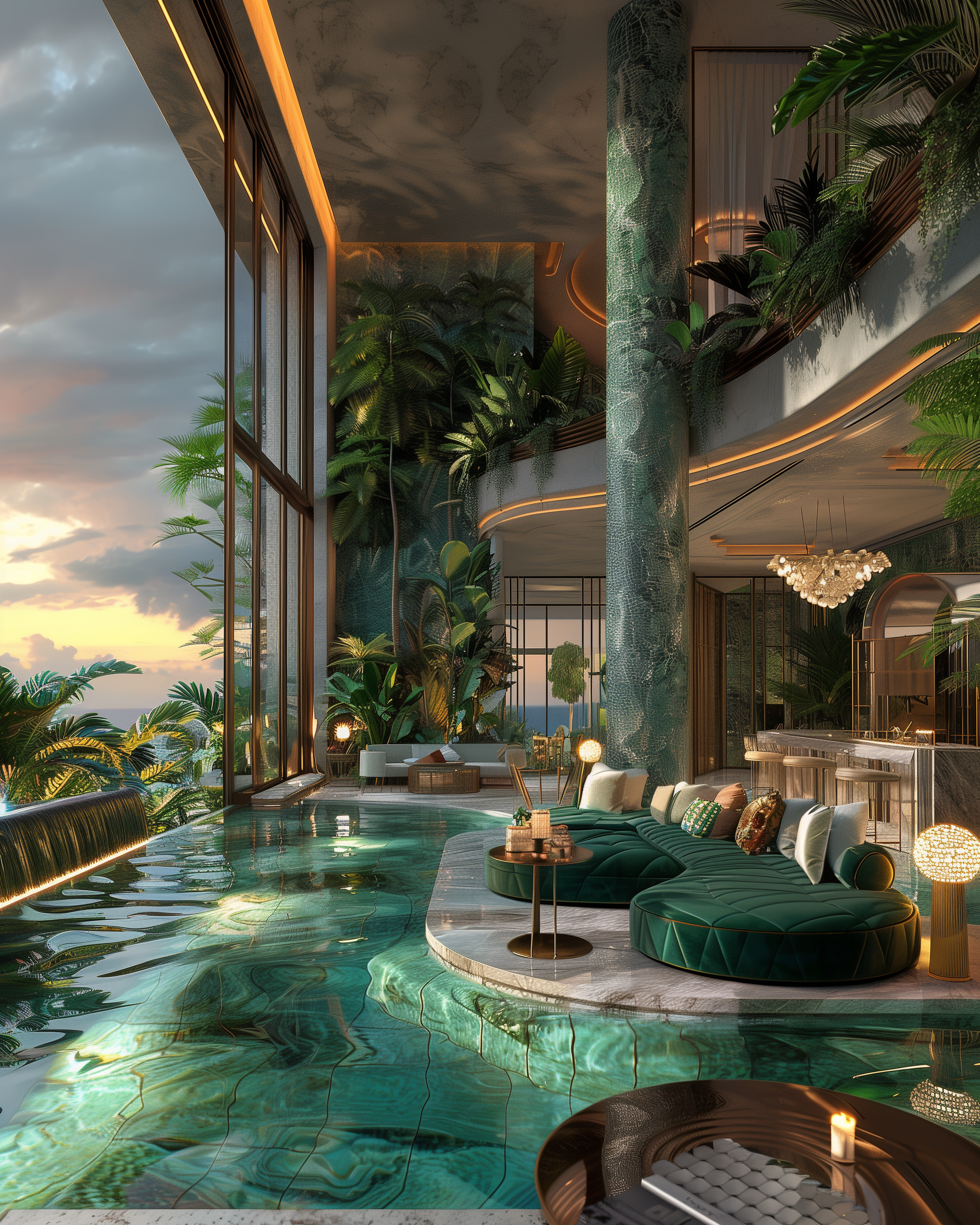


Maximalism
This trend seems to be developing as opposition to minimalism which has dominated the conversation for more than a while now. As such it is pretty easy to define as it stands in direct contrast to what we understand as moderna rchitecture. Instead of restraint in form we get exageration. Instead of muted colour palette we get contrasting, saturated tones. Instead of lack of ornamentation we get abundance of it - mixing different cultural influences.
Preparing todays selection I tried to keep it within at least *some* reason (some results looked completely outlandish) and chose ones that could be actually buildable (however barely so). As a result while I would not expect most of them to be commissioned it is still a good excercise to push the boundaries of comfort and explore forms and patterns that we do not normally see.






Parametric Wall Features
Can beauty be expressed by a mathematical formula? - when we look at some expressions of parametric design it is definitely easy to believe so! This school of design uses equations to define the sequencing of elements - whether these be tiles, slats or any other. Today we are looking at examples of this school of design expressed in interior and exterior design features.
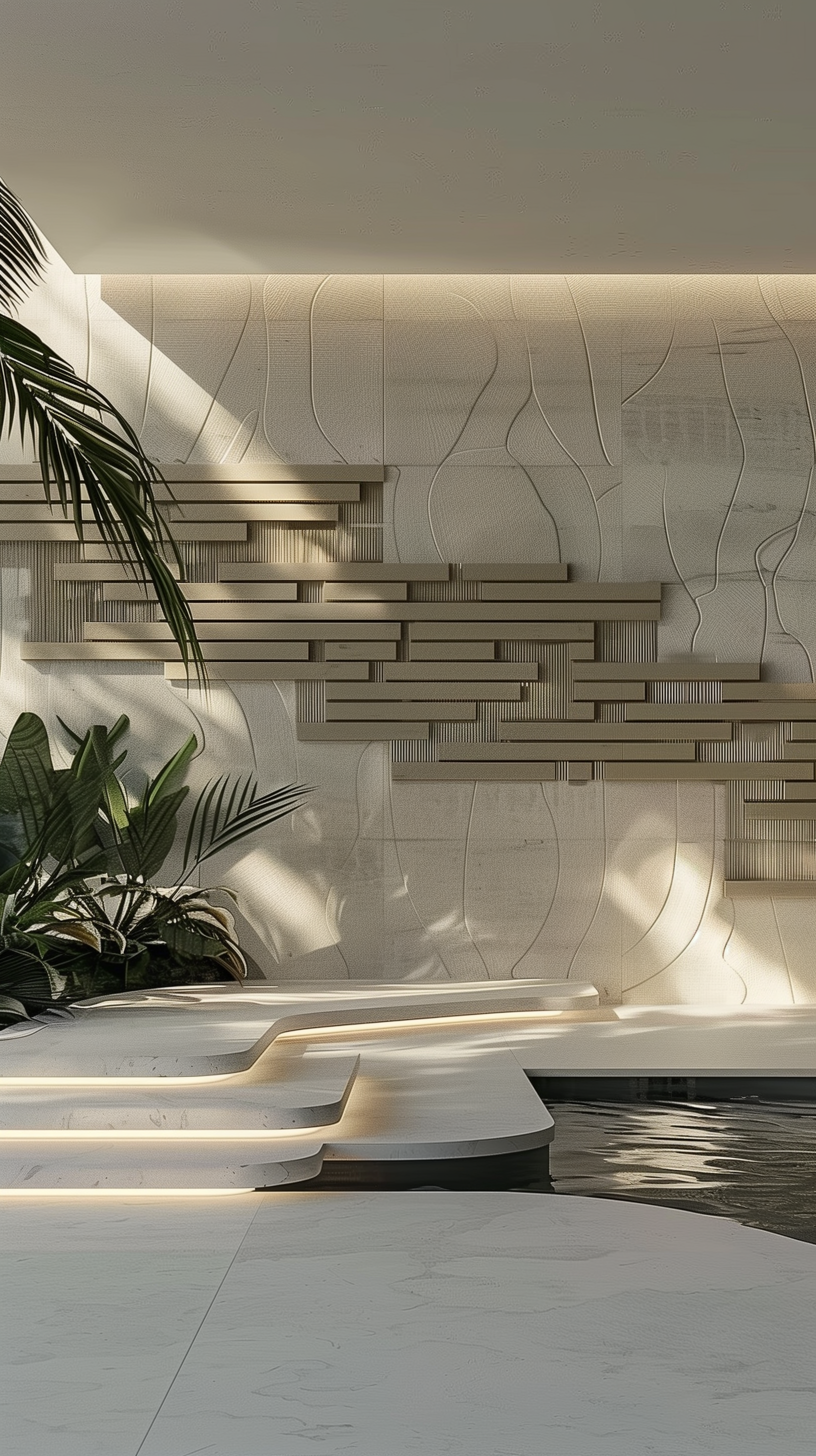


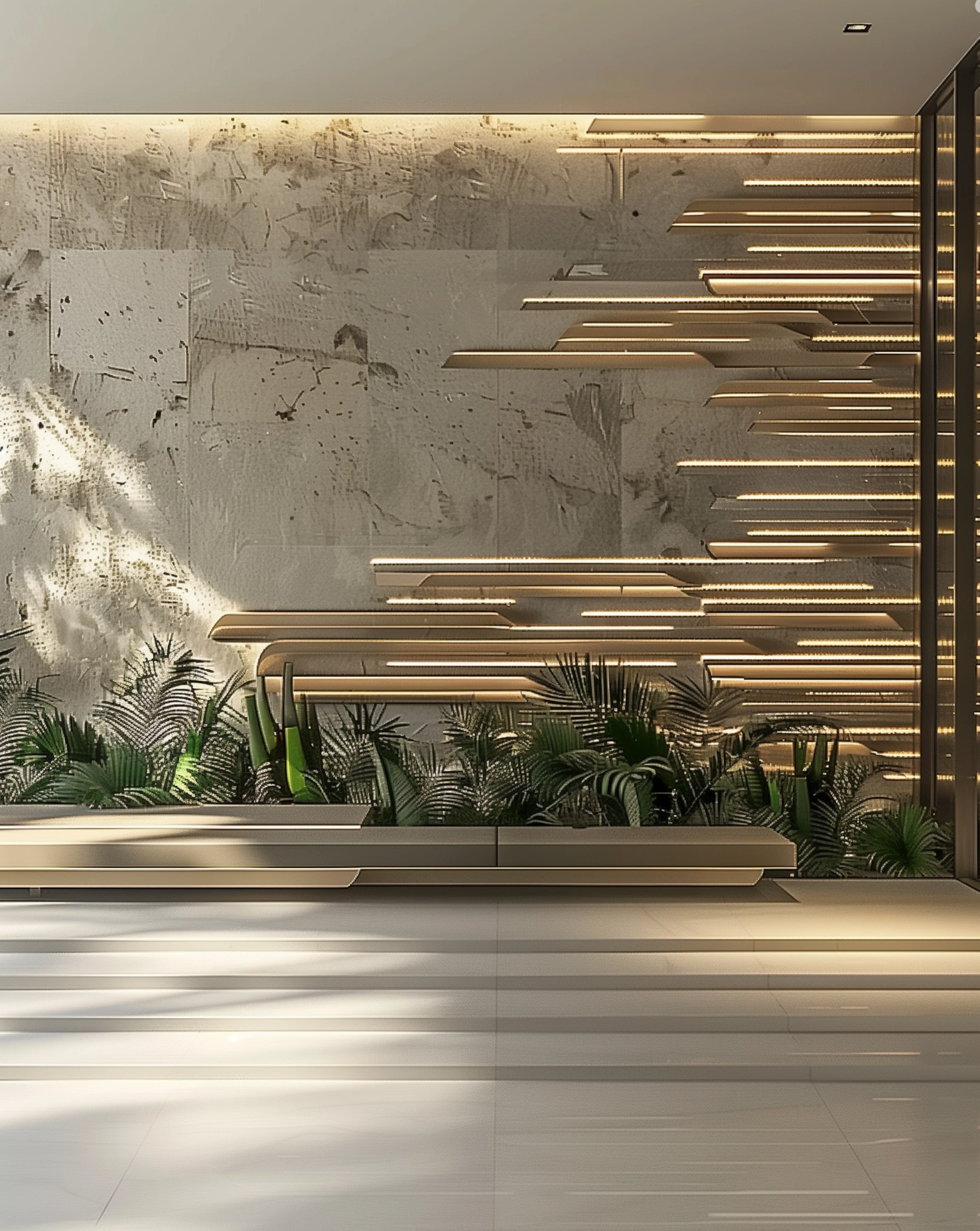
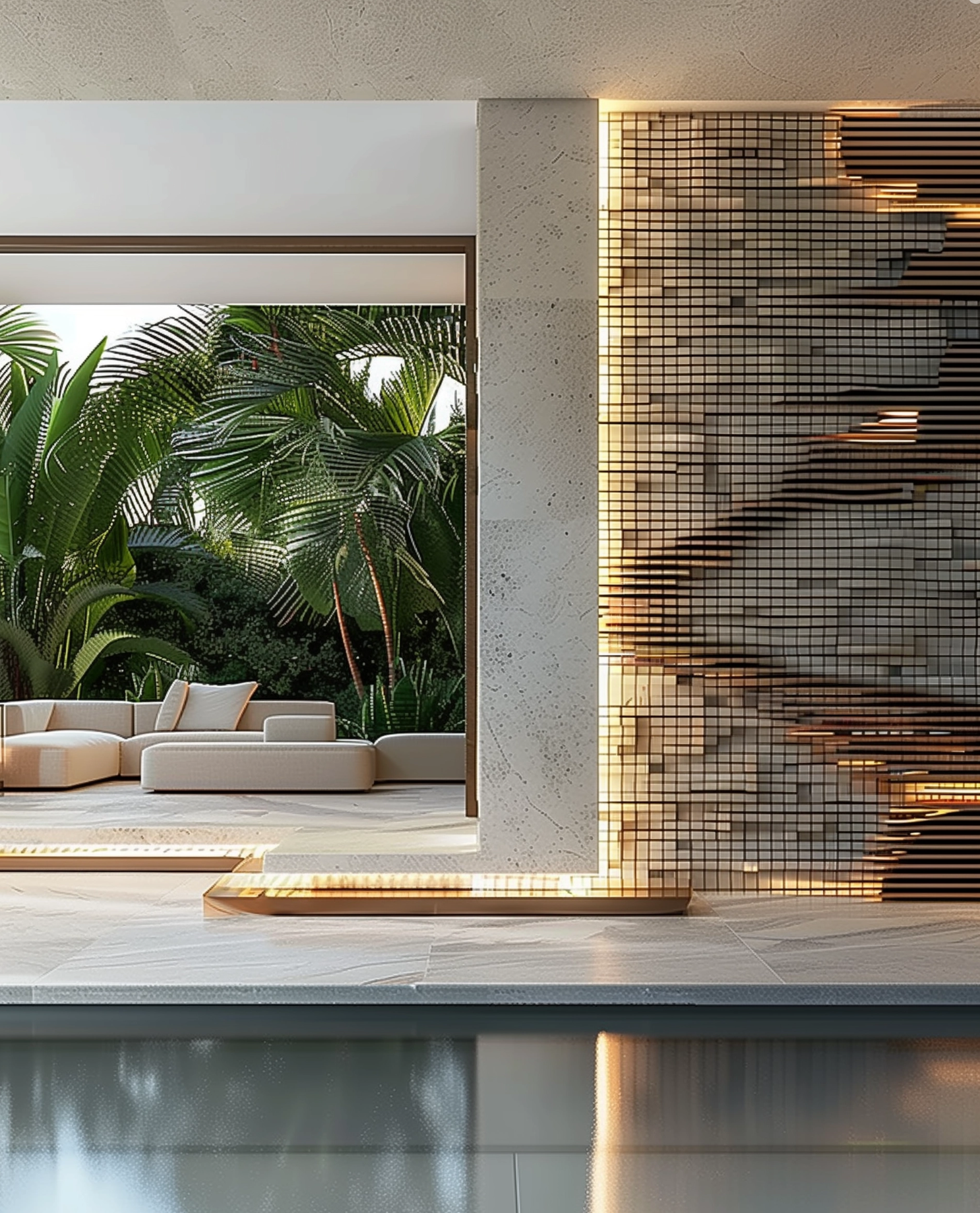

Automotive Inspirations II
hinking about the actual process of how this 'taking inspiration' looks like we need to consider obviously that we are bridging two completely different design mediums. We dont want to end up with a villa that looks like a car - we ought to be much more sophisticated than that! My suggestion would be to consider the general principles of the design starting with these:
1. What is the line quality of the design - how does the overall silhouette of the car look like and what parallels can be drawn with a design of the villa - are there straight lines, how strong are the curves, are there sharp or chamfered corner etc.
2. What are the characteristic design features, geometry or details that would be relevant in the architectural design
3. What is the overall 'feel' - more agressive, serene, elegant and subtle, calm and sophisticated, refined and stately?
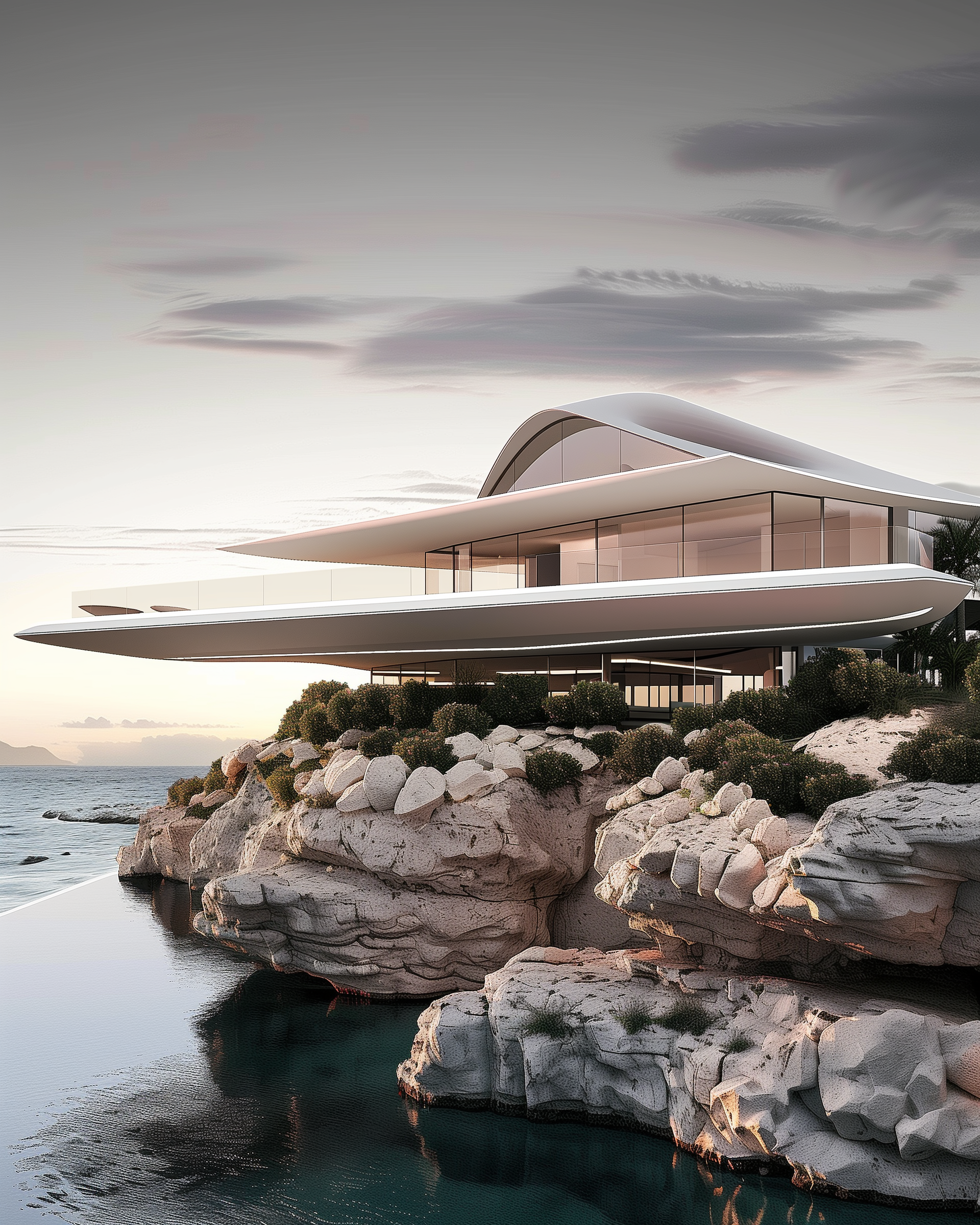
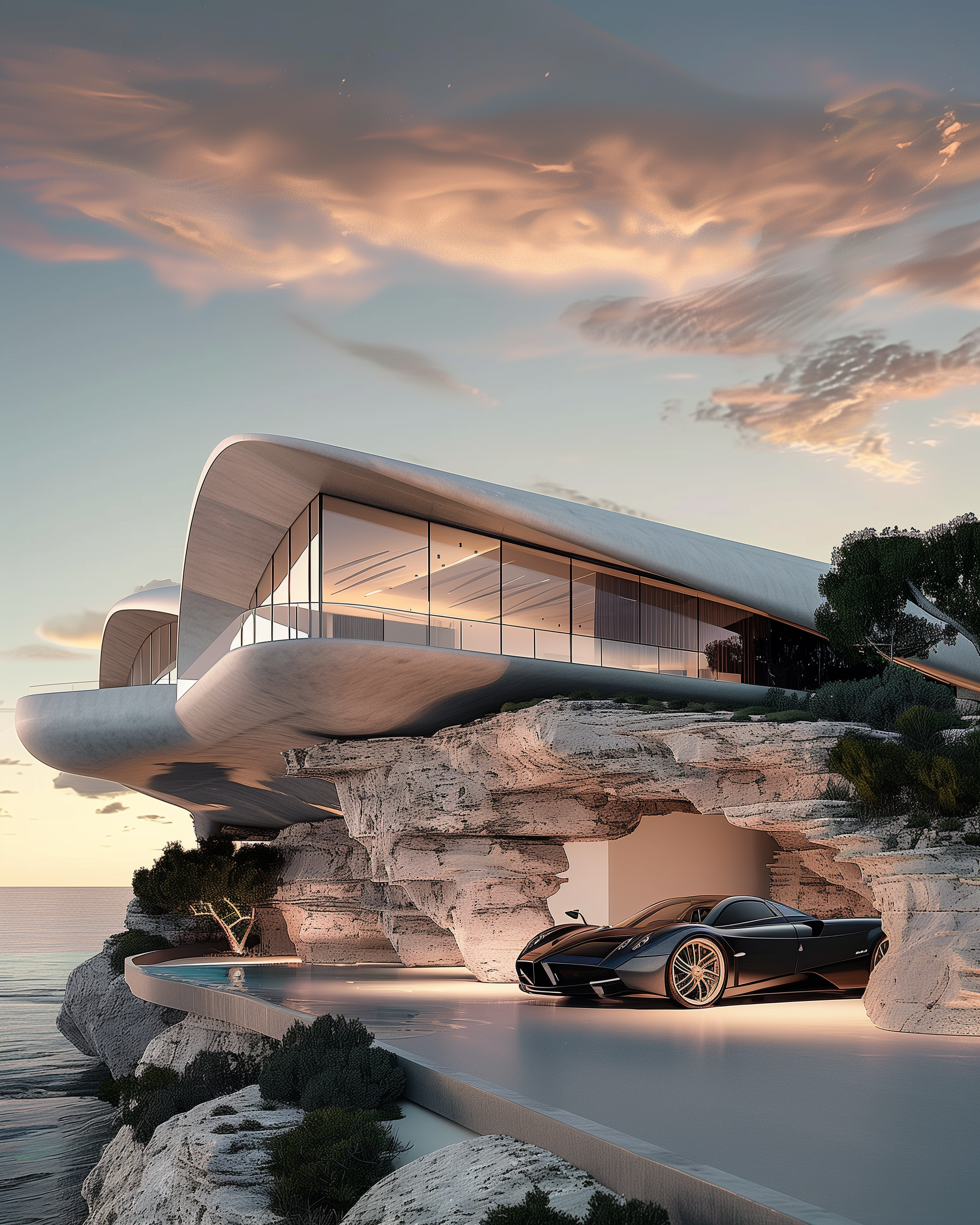
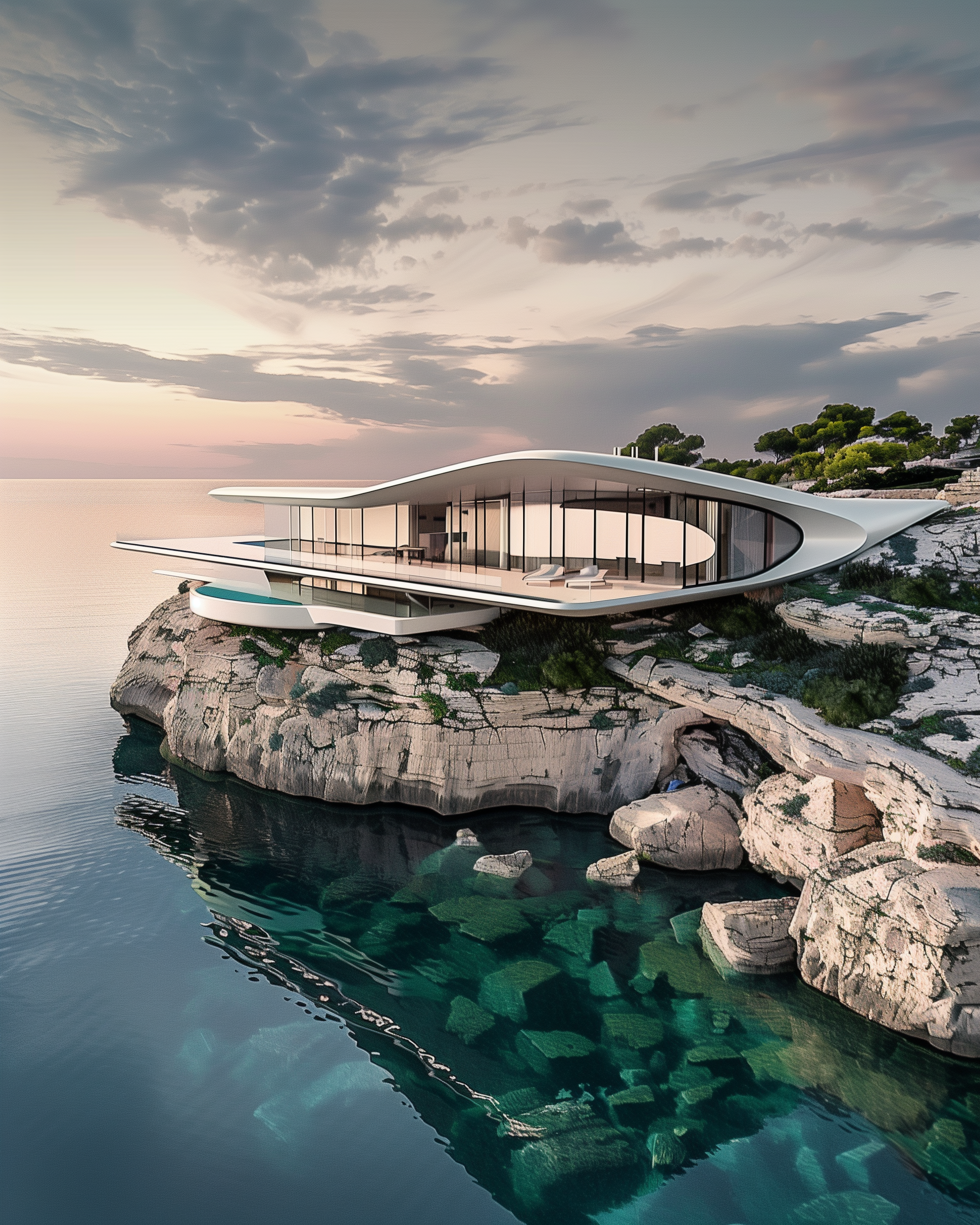

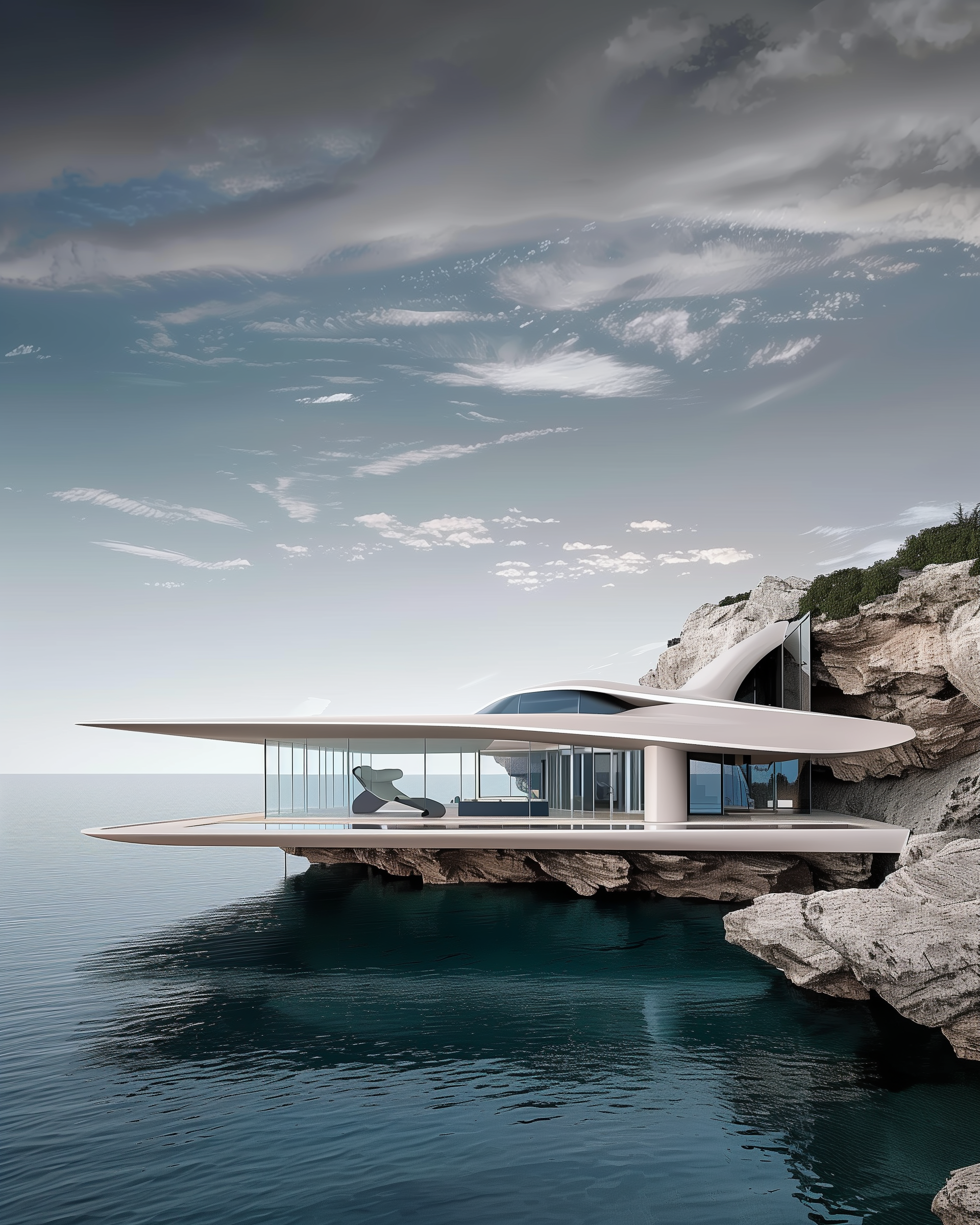
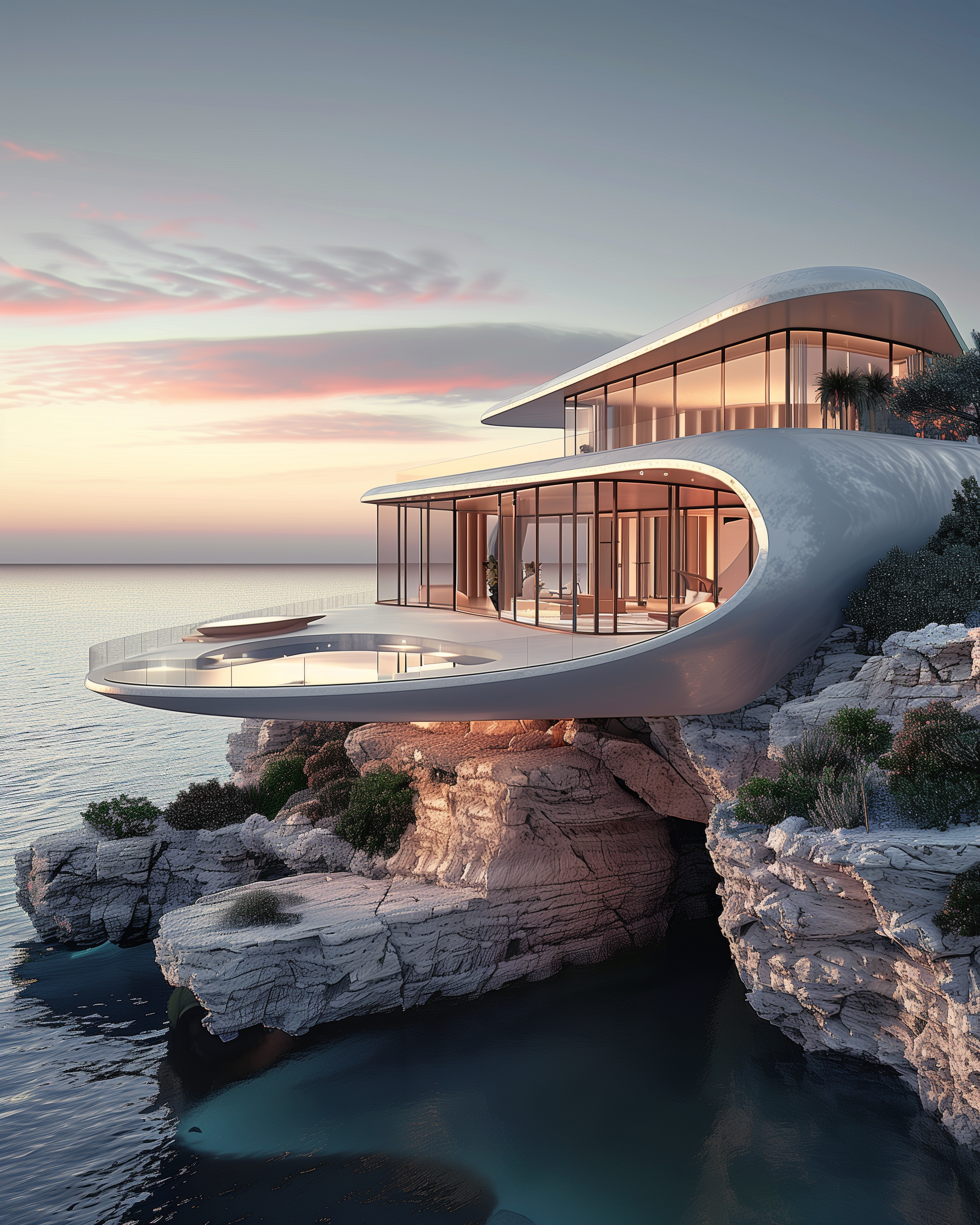
Curved Furniture
A recently established (or coming back) trend in interior design is the use of curved furntiure, characterized by fluid lines and organic shapes. It complements minimalist and modern aesthetics, enhancing visual harmony and serving as an excellent focal point. Fits well in various styles, from contemporary glam to mid-century modern, using luxurious materials like marble, brass, and velvet.

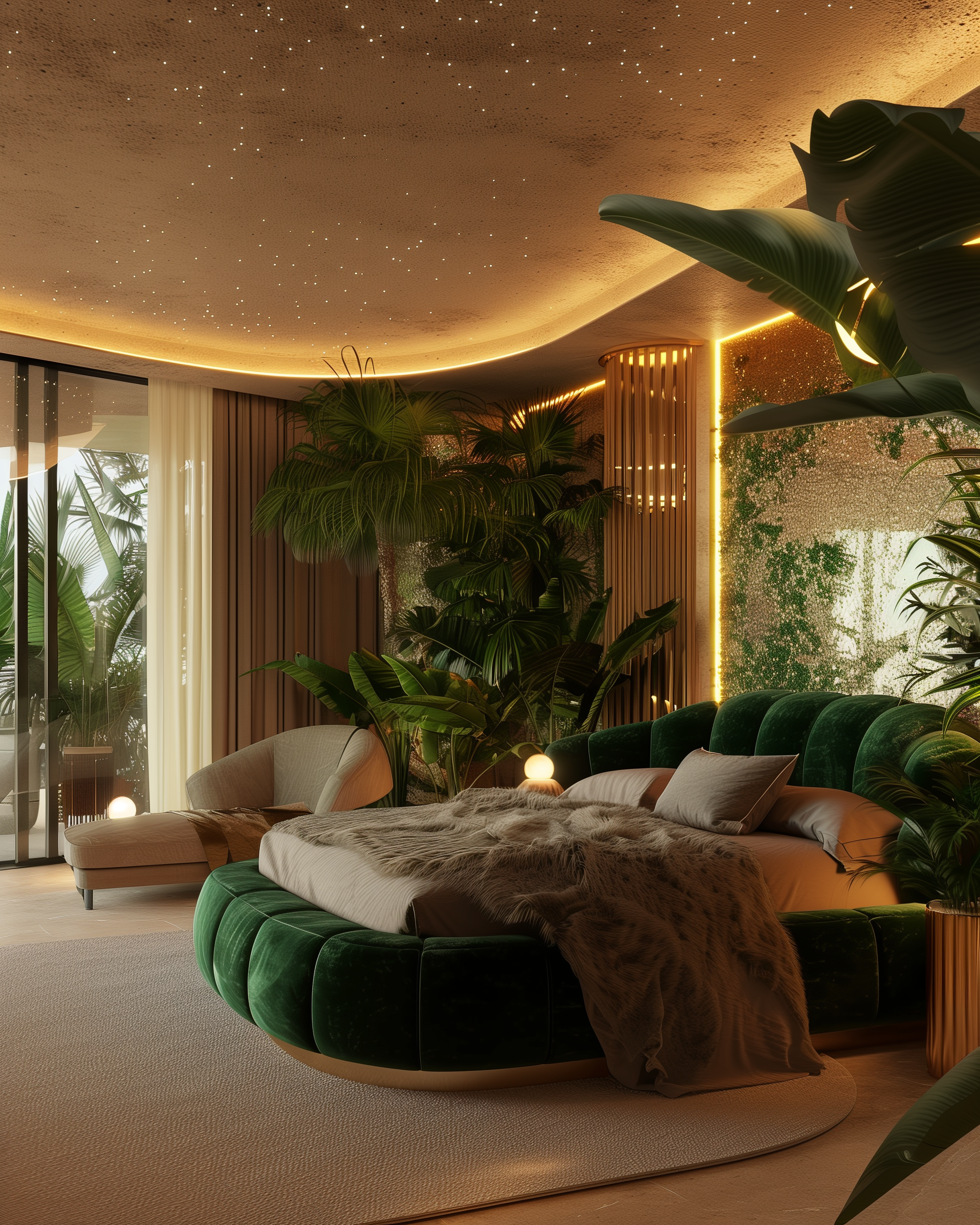




Garden Design Trends
Chelsea Flower Show is the biggest and oldest garden show in the world which had its 111th edition happening this May in London.
Among the many exhibited designs there was a couple emerging trends that are well-suited to serve as inspiration:
1. Water Management and Conservation: Gardens featured rainwater harvesting, swales, and cascading ponds.
2. Bold and Vibrant Colors: Bright hues like yellow, orange, and red
3. Use of Recycled and Natural Materials: Designers utilized recycled materials like 3D-printed terracotta, hempcrete, and reclaimed bricks to create sustainable landscapes.
4. Curated Wilderness: Naturalistic planting with wildflowers and native species
5. Foliage Focus: Emphasis on lush foliage


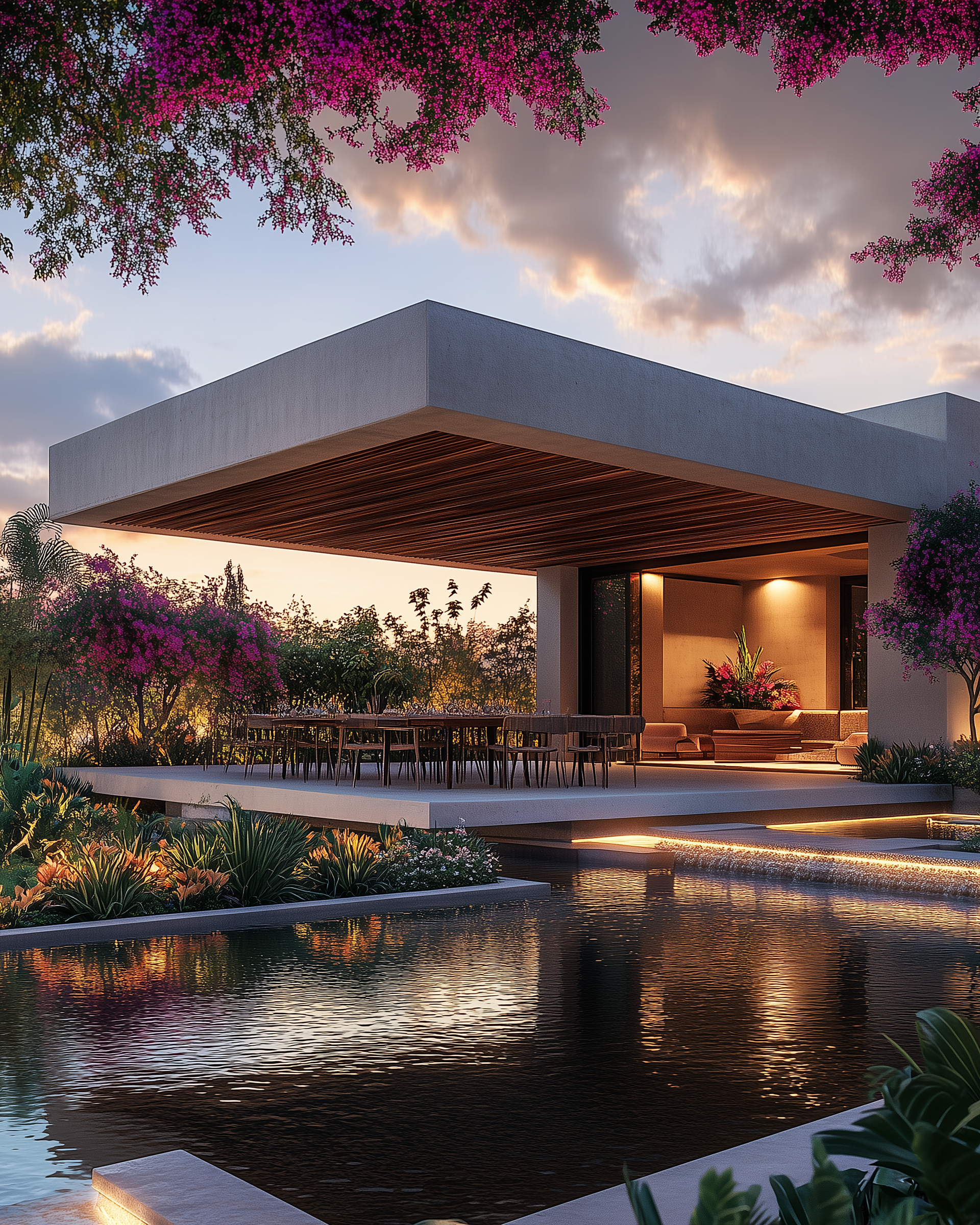



Layered Lighting
Lighting design is one of these elements that sometimes is considered way too late in the overall design process. Once all the key decisions have been made it is often too late for the lighting designers to really spread their wings. Conversely, when we invited to the table at the early conceptual stage, lighting designers can help create a truly mesmerizing effects. Fortunately we are lately seeing a growing appreciation of the art of lighting design which leads to some stunning effects.
Layered lighting is nothing extraordinary - its just what is dictated by common sense: there should be many light sources incorporated to serve different functions:
- Ambient lighting, providing general illumination for the space
- Task lighting, focusing on areas that might need some extra intensity to serve their function - eg. cooking or reading
- Accent lighting, to highlight decorative elements like 3D wall panels
- Decorative lighting, serving as an ornamental element in and of its own
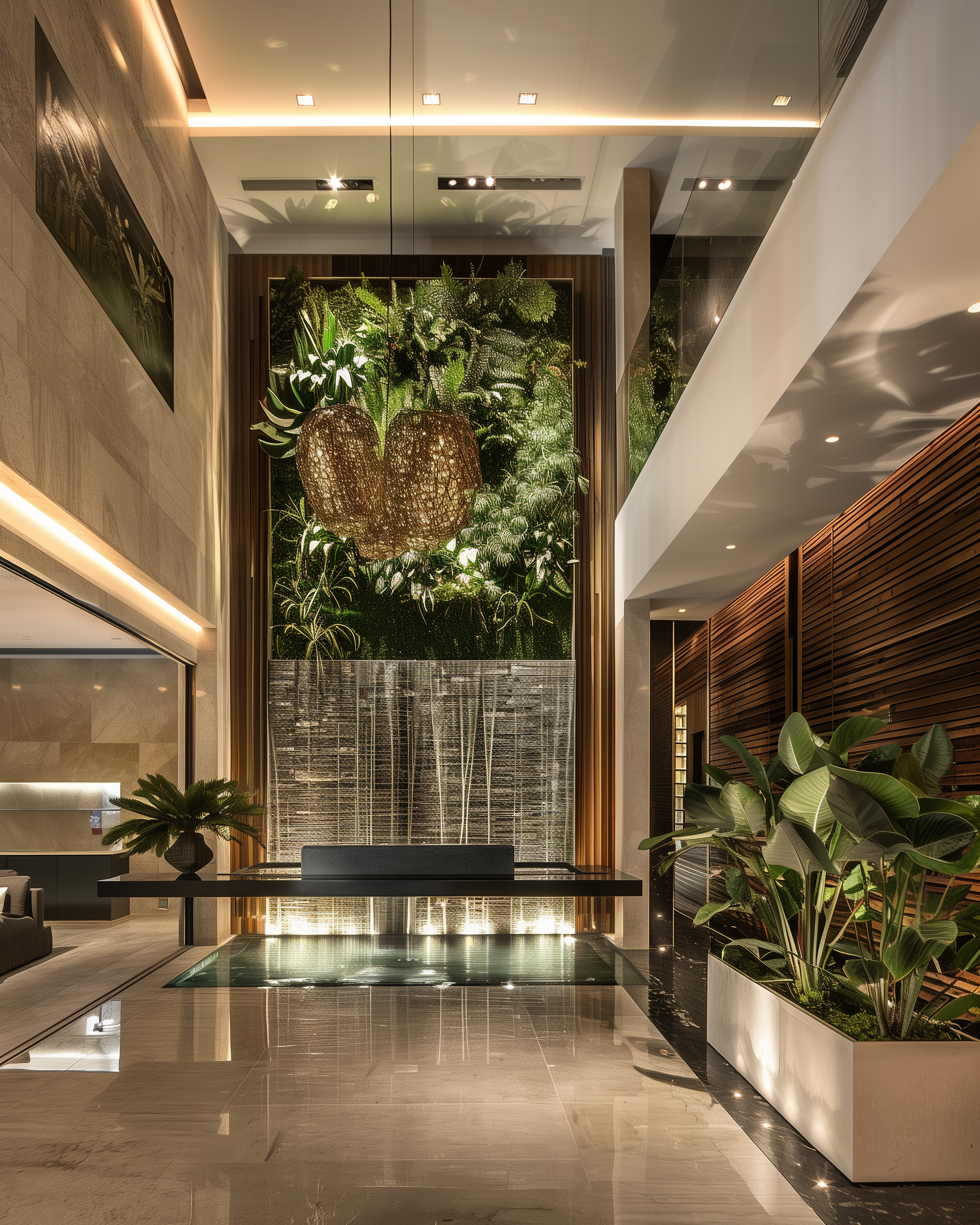



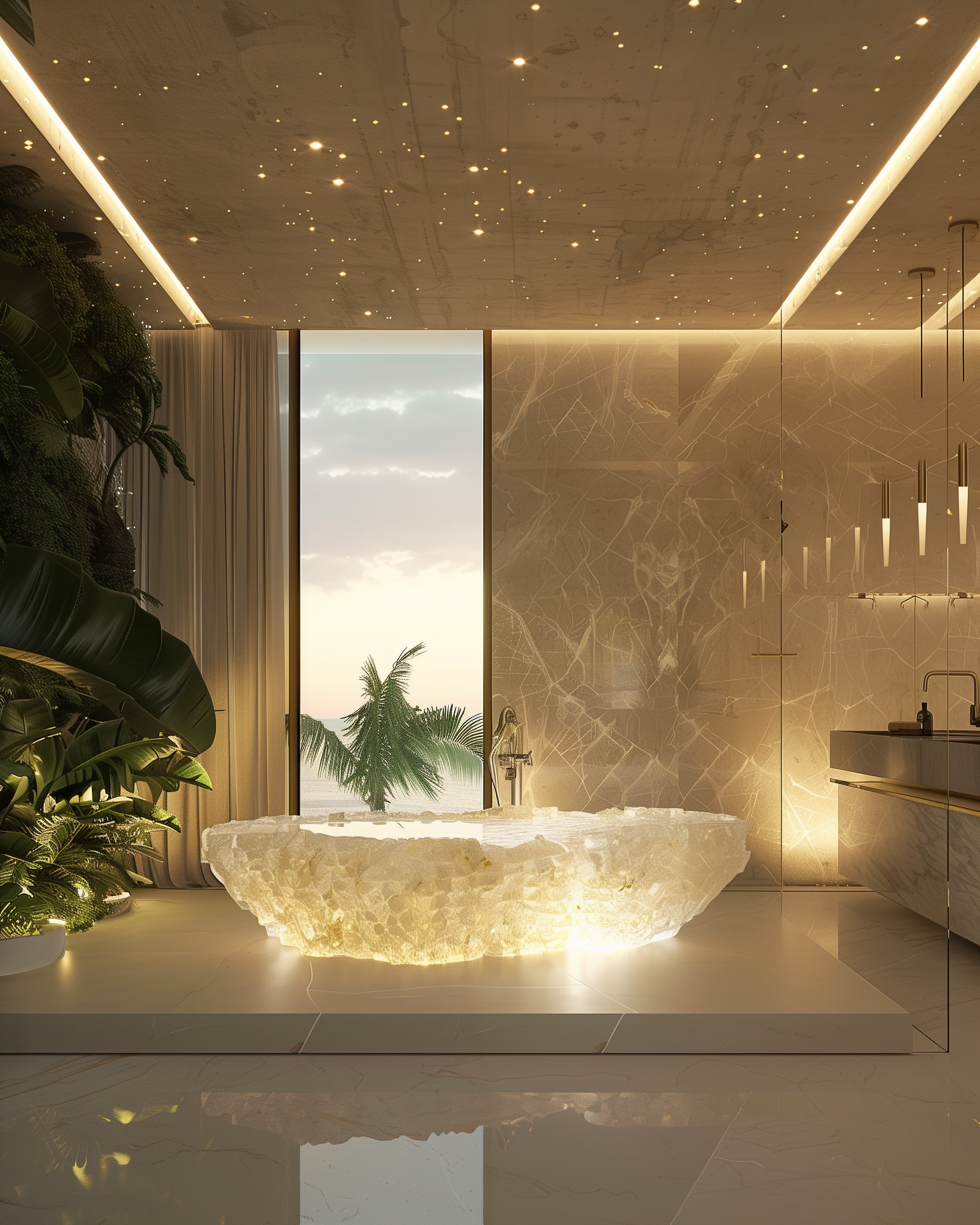

Mono-rooms
Its a really interesting one - single hue in a variety of tones selected to dominate the space. In my interpretation I chose to balance it out with the usual biophilic elements.
It feels that with a modern architecture that could be a little monotonous but it seems to create interesting results when used with heavily ornamented styles like baroque, art nouveau of art deco. Not sure if that would be necessarily my choice for a home decoration but surely makes for an interesting look. What do you think?
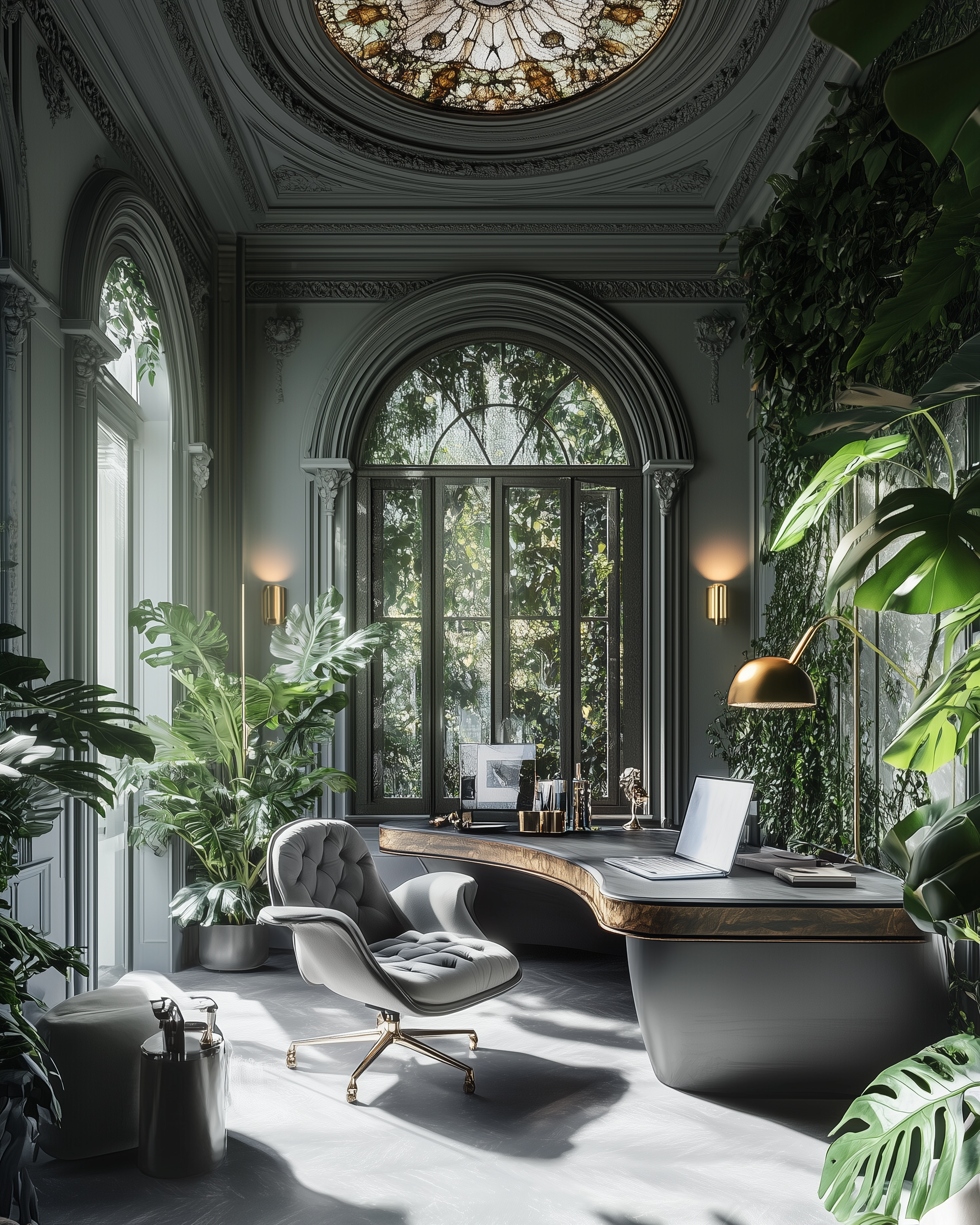


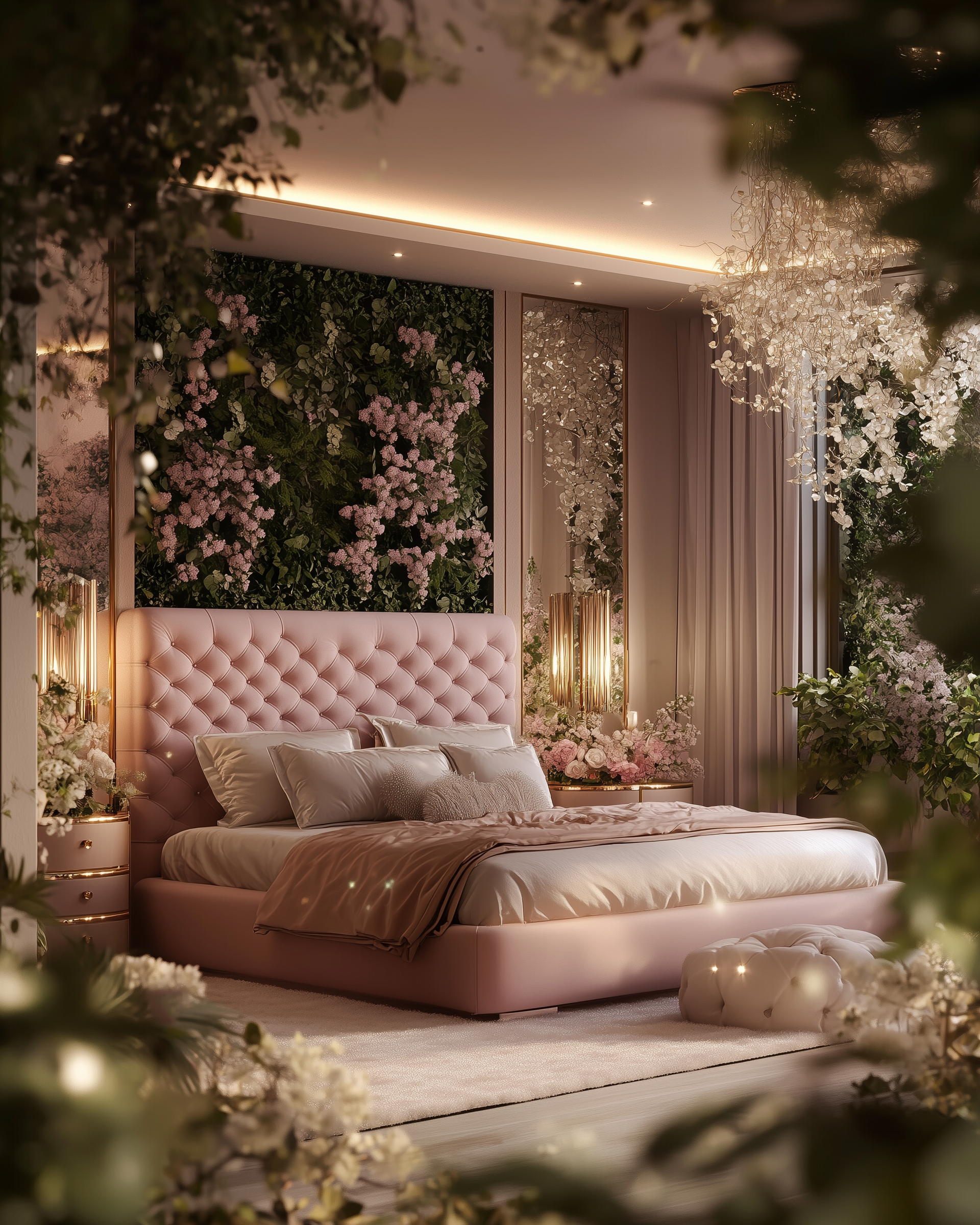


Perforated Screens II
Today we are revisiting this trend with a bit of a biophilic twist. Using the screens really adds another dimension to the architecture as the play of light and shadow makes the ambiance change with the position of the sun. Especially combined with minimalist forms of the architecture there is great value to add this contrasting softness - in this case offered both by planting and the intricate patterns of the screens.
